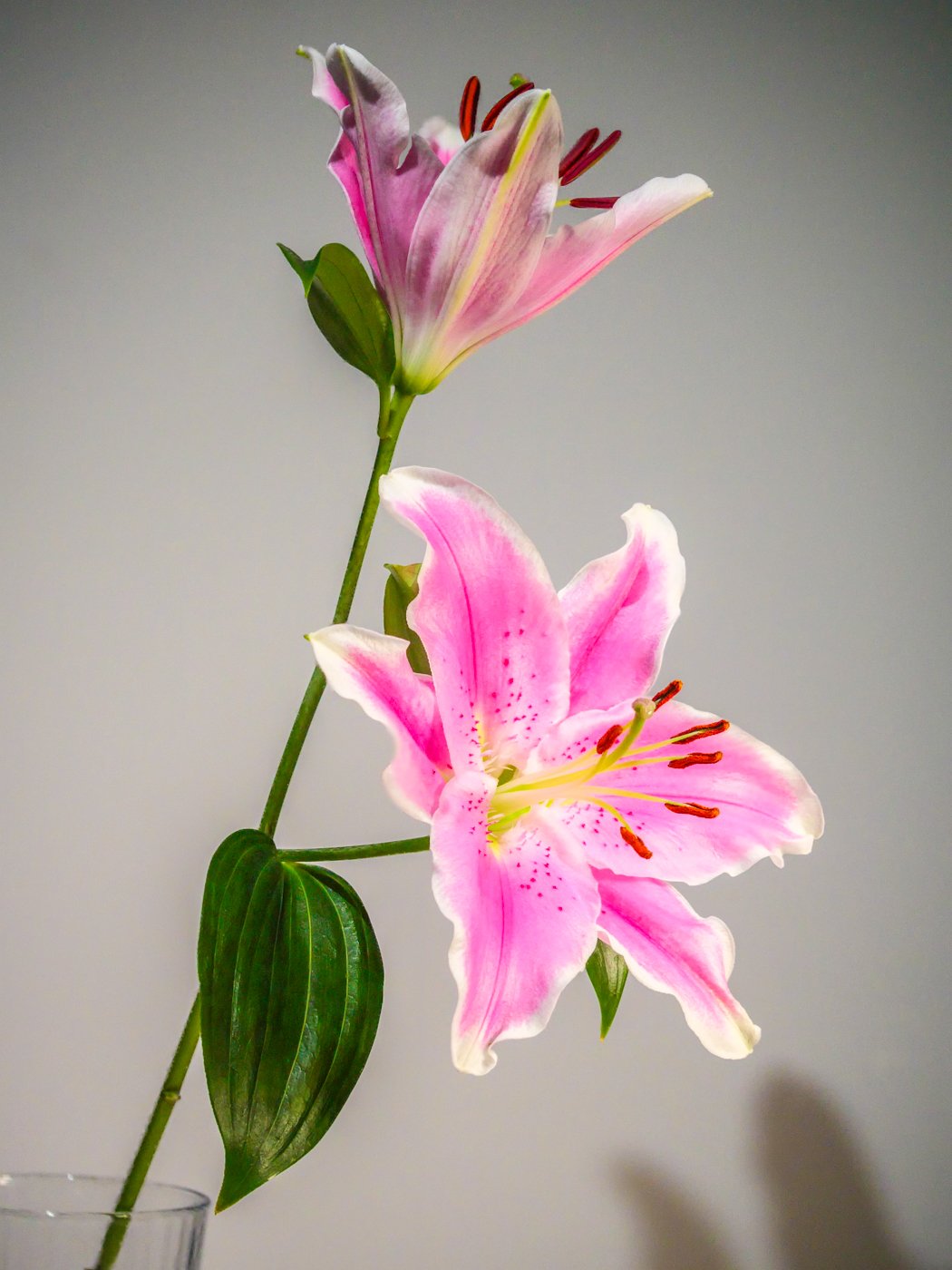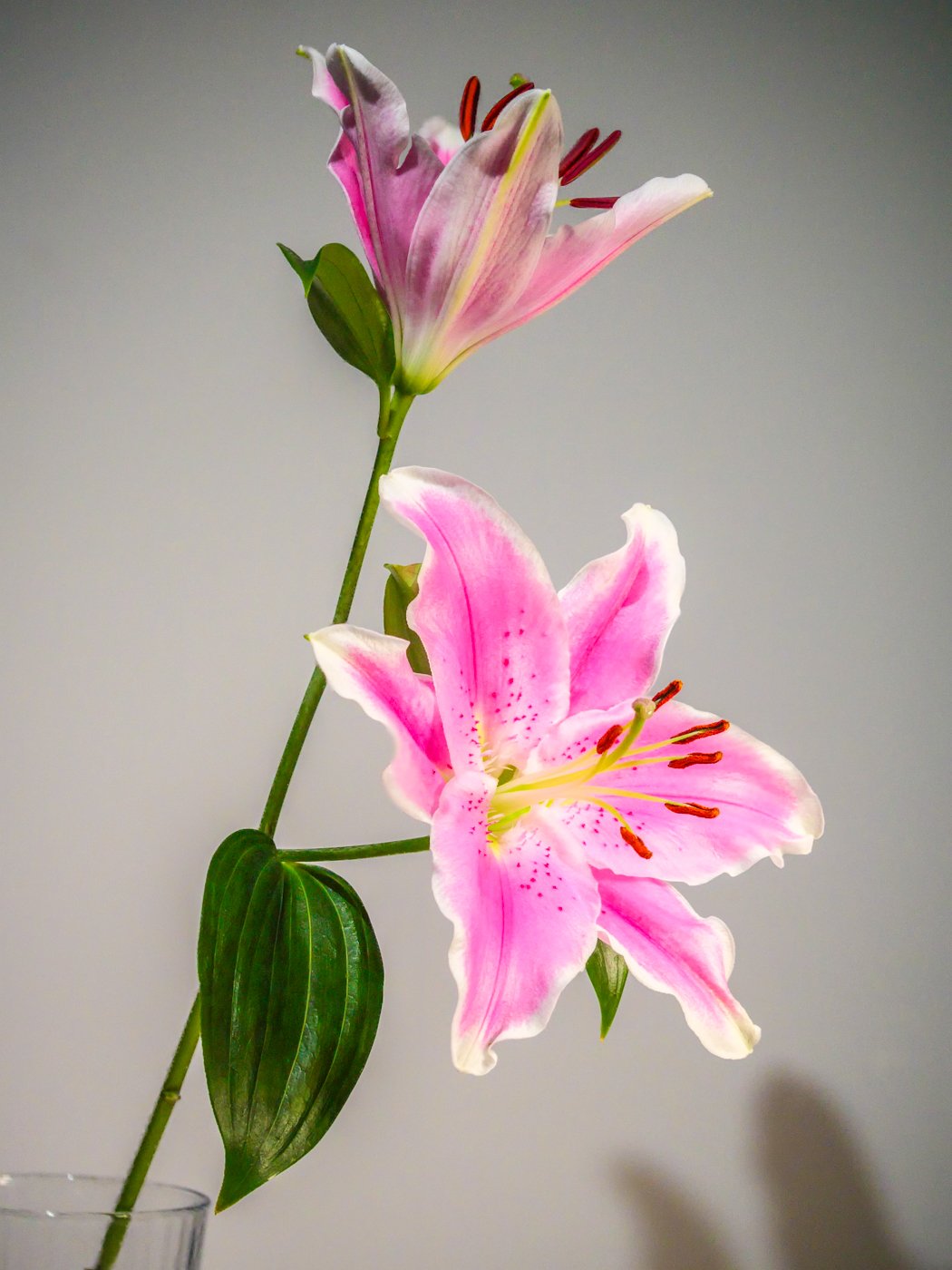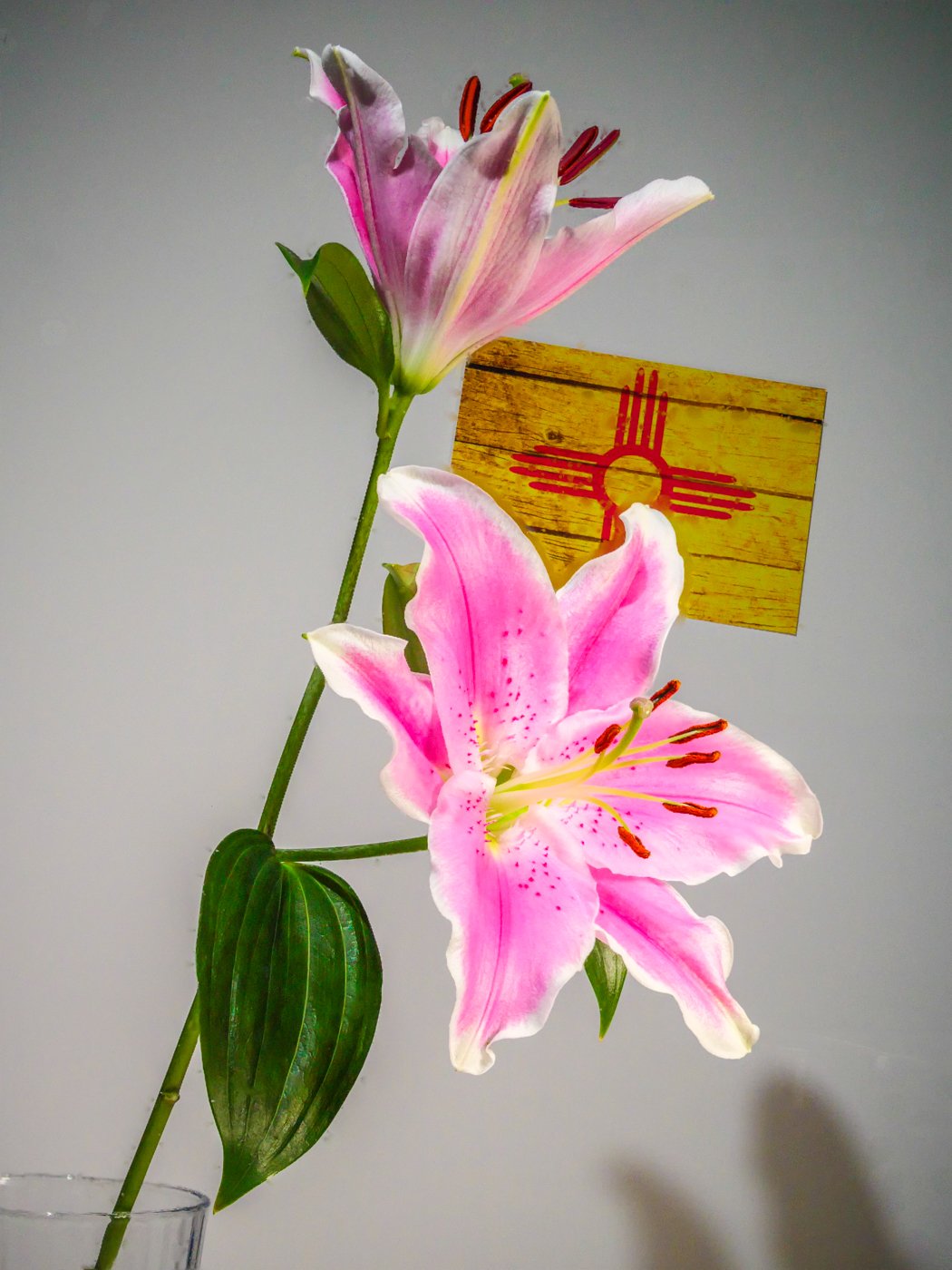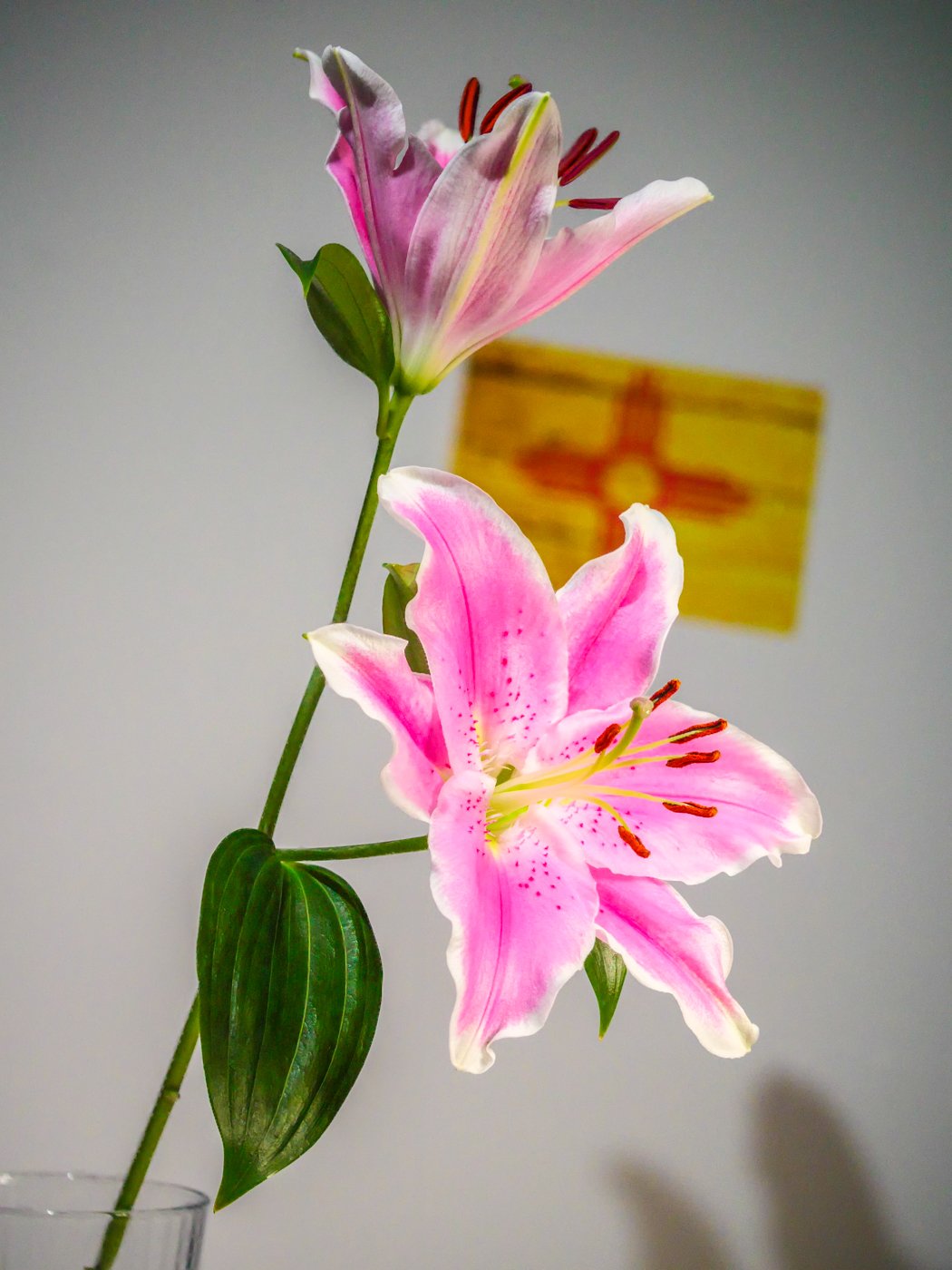Lumix GH5, GH-5S and G9 Firmware updates announced - (Availability May 30, 2018)
 Panasonic yesterday announced new firmware updates for the Lumix DC-GH5 (Firmware Version 2.3), DC-GH5S (Firmware Version 1.1) and DC-G9 (Firmware Version 1.1) to further enhance their performance and usability. The firmware updates will be downloadable on May 30, 2018The new firmware includes the following upgrades: LUMIX DC-GH5 Firmware Ver.2.3
Panasonic yesterday announced new firmware updates for the Lumix DC-GH5 (Firmware Version 2.3), DC-GH5S (Firmware Version 1.1) and DC-G9 (Firmware Version 1.1) to further enhance their performance and usability. The firmware updates will be downloadable on May 30, 2018The new firmware includes the following upgrades: LUMIX DC-GH5 Firmware Ver.2.3
- Improvement of AF performance
- Improvement of Body I.S.(Image Stabilizer) performance
- mprovement of sound recording performance
- New functions
- Other improvements
LUMIX DC-GH5S Firmware Ver.1.1
- Improvement of AF performance
- Improvement of sound recording performance
- New functions
- Other Improvements
LUMIX DC-G9 Firmware Ver.1.1
- Improvement of AF performance
- Improvement of Body I.S.(Image Stabilizer) performance
- Improvement of High Resolution Mode
- Improvement of sound recording performance
- New functions
- Other improvements
The new firmware programs will be available at LUMIX Customer Support Site on 30 May, 2018. http://av.jpn.support.panasonic.com/support/global/cs/dsc/download/index.html
Black Swamp - Biggest Week in Birding
Went out to the boardwalk in Magie Marsh to see if I could capture a few images of the tiny warblers that migrate through the "Warbler Capital of the World" near Toledo, Ohio.Not an easy place to photograph but I feel good that the Lumix G9 paired with the Leica DG Elmar 200 mm f/2.8 prime and the 1.4X teleconverter performed exceptionally well. Most important was my ability to severely crop and get a very usable image.
 The image below is another example of a severe crop.
The image below is another example of a severe crop.
CanAm Photo Expo the last evening
If you want to attend a truly great educational photography/videography expo then consider CANAM 2019. This year the expo was held in Niagara Falls, Ontario. The 2019 Expo will be in Buffalo, NY. Three intense days of non-stop programs.Got a little time for some images on the last evening before returning to Boston.


Panasonic Lumix G9 with the 200mm Leica f/2.8 and 2X teleconverter
 Last week at the Florida Space Coast Wildlife and Birding Festival this image was shot hand-held using the new Lumix G9 and the Leica 200mm lens with the 2X Teleconverter. What I really love is the ability to handhold this combination, yes 800mm equivalant, for the entire morning. The image stabilization is exceptional and the lens performs great. Mind you the lens I was using is a pre production sample and I am sure when I have the production version, it will be even better. In addition, what is truly great about the G9 is the way it renders color - it's just fantastic!
Last week at the Florida Space Coast Wildlife and Birding Festival this image was shot hand-held using the new Lumix G9 and the Leica 200mm lens with the 2X Teleconverter. What I really love is the ability to handhold this combination, yes 800mm equivalant, for the entire morning. The image stabilization is exceptional and the lens performs great. Mind you the lens I was using is a pre production sample and I am sure when I have the production version, it will be even better. In addition, what is truly great about the G9 is the way it renders color - it's just fantastic!
Space Coast Wildlife & Birding Festival - Day 1
 It was a gorgeous 84 degree day yesterday when I arrived in Titusville for the Space Coast Festival but this morning it was a cold 51 degrees. This rapid change is no good for bird photography as most of the birds were hunkered down in the mangroves. The few that braved the cold were mostly way out of reach even with an 800 mm equivalent lens.These are a few decent images albeit severely cropped. Now for the good news - the new Leica 200 mm f/2.8 arrived and I have just unpacked it. Will give this lens a shot tomorrow morning.
It was a gorgeous 84 degree day yesterday when I arrived in Titusville for the Space Coast Festival but this morning it was a cold 51 degrees. This rapid change is no good for bird photography as most of the birds were hunkered down in the mangroves. The few that braved the cold were mostly way out of reach even with an 800 mm equivalent lens.These are a few decent images albeit severely cropped. Now for the good news - the new Leica 200 mm f/2.8 arrived and I have just unpacked it. Will give this lens a shot tomorrow morning.


The Adorama Panasonic Lumix G9 Launch Event
https://www.youtube.com/watch?v=toRCYwCvelw&t=1867s
The Lumix G9 and Post Focus
 I have been asked this many times and no matter how much I explain it there is still some confusion. Basically, the Post Focus function in the supporting Lumix cameras rely on the high-resolution video capability in conjunction with focus racking to capture a sequence of images that can be selected by defining the plane of focus. So as an example, if you were to set up a yardstick and let the camera take a post-focus image - the camera would focus on the nearest point to the lens take an image and then gradually refocus a bit further out and take another image till it reached the end of the frame at the farthest point. There would be a series of images each one at a different point of focus. Note however that this sequence is captured using the video mode of the camera. Once the images are captured, the camera does internal processing that then allows you to tap on the screen to select the image that has the best focus at that selected point. You can then opt to save this selected image. Supporting this function is post-capture peaking to confirm focus and in addition, you can magnify the image for a selective selection.This feature is further augmented with a merge function. You can merge all the images captured into a single image that is tack sharp from the closest focus point to the farthest. However what is even more useful, particularly if you use large apertures for a shallow depth of field and you want to keep your background out of focus. You can select the range you want to merge and thereby leave the remainder of the scene out of focus.The following image that I used as the lead image was captured in post focus and merged in its entirety.
I have been asked this many times and no matter how much I explain it there is still some confusion. Basically, the Post Focus function in the supporting Lumix cameras rely on the high-resolution video capability in conjunction with focus racking to capture a sequence of images that can be selected by defining the plane of focus. So as an example, if you were to set up a yardstick and let the camera take a post-focus image - the camera would focus on the nearest point to the lens take an image and then gradually refocus a bit further out and take another image till it reached the end of the frame at the farthest point. There would be a series of images each one at a different point of focus. Note however that this sequence is captured using the video mode of the camera. Once the images are captured, the camera does internal processing that then allows you to tap on the screen to select the image that has the best focus at that selected point. You can then opt to save this selected image. Supporting this function is post-capture peaking to confirm focus and in addition, you can magnify the image for a selective selection.This feature is further augmented with a merge function. You can merge all the images captured into a single image that is tack sharp from the closest focus point to the farthest. However what is even more useful, particularly if you use large apertures for a shallow depth of field and you want to keep your background out of focus. You can select the range you want to merge and thereby leave the remainder of the scene out of focus.The following image that I used as the lead image was captured in post focus and merged in its entirety. For this next Post-focus demonstration I placed a postcard on the background and merged the entire set of images. As you can see the postcard is in focus as are the flowers.
For this next Post-focus demonstration I placed a postcard on the background and merged the entire set of images. As you can see the postcard is in focus as are the flowers. Next, I used the same Post-Focus set but this time iI selected just the range I wanted, just the flowers and executed the merge. The following is the resulting image with the postcard nicely blurred:
Next, I used the same Post-Focus set but this time iI selected just the range I wanted, just the flowers and executed the merge. The following is the resulting image with the postcard nicely blurred: I hope this gives you a better understanding of the power of this feature and the many ways you can use it. Please note that when these images are captured using 6K Photo Mode, the resulting images are 18 MP and suitable for very large enlargements when processed with the appropriate software.
I hope this gives you a better understanding of the power of this feature and the many ways you can use it. Please note that when these images are captured using 6K Photo Mode, the resulting images are 18 MP and suitable for very large enlargements when processed with the appropriate software.
Lumix G9 - High Resolution Mode
 Many new cameras have repurposed their in body image stabilization to create high resolution images employing sensor shift capture. The Lumix G9 uses the same concept but shifts the sensor by 1/2 pixel rather than a full pixel. It captures 8 images in raw and combines them in-camera to generate a single 80 MP Raw file. Whats more is that you can capture a single standard resolution RAW file of the same image in addition to the high resolution image. This is a great feature for studio based product photography, still life and architectural photography. As there is (releatively) significant capture time, any scene with moving subject matter is not suitable for High Resolution capture. I set up a simple shot of a Gerbera Daisy with an artificial background to test the resolution and imprtance of this feature. the image above is what I was photographing. The shutter delay was set for 15 seconds to give me enough time to exit the room and to stabilize any vibration or tripod and camera body. The exposure triad:f/8, 1/200 sec at ISO 200.The red stroked are is enlarged below for comparison. Of significance, is the minimal pixilation of theis crop in the hi-res image compared to the standard 20.3 MP file.
Many new cameras have repurposed their in body image stabilization to create high resolution images employing sensor shift capture. The Lumix G9 uses the same concept but shifts the sensor by 1/2 pixel rather than a full pixel. It captures 8 images in raw and combines them in-camera to generate a single 80 MP Raw file. Whats more is that you can capture a single standard resolution RAW file of the same image in addition to the high resolution image. This is a great feature for studio based product photography, still life and architectural photography. As there is (releatively) significant capture time, any scene with moving subject matter is not suitable for High Resolution capture. I set up a simple shot of a Gerbera Daisy with an artificial background to test the resolution and imprtance of this feature. the image above is what I was photographing. The shutter delay was set for 15 seconds to give me enough time to exit the room and to stabilize any vibration or tripod and camera body. The exposure triad:f/8, 1/200 sec at ISO 200.The red stroked are is enlarged below for comparison. Of significance, is the minimal pixilation of theis crop in the hi-res image compared to the standard 20.3 MP file. 
 The base file at 300 DPI is approx. 34.5 inches by 26 inches. I have sussessfully enlarged this image to 30 feet by 22.5 feet and the image maintains exceptional quality.
The base file at 300 DPI is approx. 34.5 inches by 26 inches. I have sussessfully enlarged this image to 30 feet by 22.5 feet and the image maintains exceptional quality.
Warm Colors on a Frigid Afternoon
 On a frigid day when it is so cold that when you step out of the car it feels like your nose is going fo freeze and fall off, your fingers and toes become numb in seconds. It is no fun untill you see some golden light from the setting sun on the last day of 2017. Now the frezing cold is forgotten - the image is all that matters. The colors contrased against the ice, the patterns in the water and the terraces in the ice had to be captured.This was shot with the Panasonic Lumix G9, the Leica 12-60 mm lens at 44 mm. Exposure triad: f/6.3, 1/250 sec at ISO 200.
On a frigid day when it is so cold that when you step out of the car it feels like your nose is going fo freeze and fall off, your fingers and toes become numb in seconds. It is no fun untill you see some golden light from the setting sun on the last day of 2017. Now the frezing cold is forgotten - the image is all that matters. The colors contrased against the ice, the patterns in the water and the terraces in the ice had to be captured.This was shot with the Panasonic Lumix G9, the Leica 12-60 mm lens at 44 mm. Exposure triad: f/6.3, 1/250 sec at ISO 200.
Panasonic Lumix G9 Continuous Auto Focus Test
First - Wishing all my readers a Very Happy New Year.This past weekend my wife and I spent two days in Franconia, New Hampshire. The temperatures were in the -10 to -13 Degrees in the evenings and -7 to -10 during the day. We were hoping to photograph some ice climbers but the winds were too strong and we did not find any. In any case, these frigid conditions were ideal for testing out how the new G9 would perform. the camera is rated to work at temperatures below freezing down to 14 Degrees F. This morning it was -7. I did not want to risk doing an extended time-lapse sequence but did want to test out the continuous autofocus.Canon mountain has some decent ski slopes and there were a few skiers on the slopes. A skier coming downhill and then swinging across to the right was the layout. I set the camera to AFC (Auto Focus Continuous), drive mode was set to high, Manual exposure - f/5, 1/1000 sec, ISO 200. The lens was the Leica 12-60 at mm. I set the capture to RAW + Jpeg (large) with RAW to Card 1 and Jpeg to Card 2. The cards were not the fastest - SanDisk V30 SDXC, 95 MB/s.Waiting for a skier to come into view, I depressed the shutter and followed him as he came down the slope. The sequence was 9 seconds for a total 66 images. I was very pleased to see that the autofocus continuous mode worked really well. I believe that all 66 images in the sequence are in acceptable focus and very usable. I would like to try a similar test with a longer lens but given the way the camera performed, despite the cold, I am extremely happy.The entire jpeg sequence is below. The only adjustments made to the images was a small correction in white balance, sharpening and noise reduction were both zeroed out in Lightroom. The images were then exported for this display with a 1024 pixel horizontal setting. If you are interested in a folder of these jpeg images or any of the RAW files for further validation please let me know and I will be happy to get them to you. [ngg_images source="galleries" container_ids="120" display_type="photocrati-nextgen_pro_horizontal_filmstrip" image_crop="0" image_pan="1" show_playback_controls="1" show_captions="0" caption_class="caption_overlay_bottom" caption_height="70" aspect_ratio="1.333" width="150" width_unit="%" transition="fade" transition_speed="1" slideshow_speed="5" border_size="0" border_color="#ffffff" override_thumbnail_settings="1" thumbnail_width="120" thumbnail_height="90" thumbnail_crop="1" ngg_triggers_display="always" order_by="sortorder" order_direction="ASC" returns="included" maximum_entity_count="500"]
GH5 High ISO in a studio setting
 This image was captured last weekend at NECCC. Panasonic Lumix GH5 using the original Lumix Vario 35 - 100 mm f/2.8 lens. at 100 mm. Exposure triad f/2.8, 1/160 sec, ISO 3200. The image is straight out of camera with only a minor crop for composition and no retouching. The RAW to JPG conversion was done using Capture One Pro The camera performs exceptionally well as does the lens. there is no lack of sharpness, the color rendition is great as is the stabilization. There is a lot of great video produced using the GH5 but I am so pleased with the performance of this camera for stills.
This image was captured last weekend at NECCC. Panasonic Lumix GH5 using the original Lumix Vario 35 - 100 mm f/2.8 lens. at 100 mm. Exposure triad f/2.8, 1/160 sec, ISO 3200. The image is straight out of camera with only a minor crop for composition and no retouching. The RAW to JPG conversion was done using Capture One Pro The camera performs exceptionally well as does the lens. there is no lack of sharpness, the color rendition is great as is the stabilization. There is a lot of great video produced using the GH5 but I am so pleased with the performance of this camera for stills.
"Refugees Welcome"
 After a lot of debate I decided to title this image "Refugees Welcome". In the past 6 months the topic of refugees has been dominant in the news. With Canada as one of the countries that has openly welcomed refugees, I felt this image represented the statement appropriately. The concrete totems can be viewed as either emerging or going into the St. Lawrence river in Northern Quebec.A little back story on this image: we had picked a number of location to photograph this morning but the incessant rain messed up our plans. So we stopped for a second breakfast and more coffee. - Well one just cant keep sitting in a restaurant for ever so I decided to get this image rain or no rain. It was pouring but I had my GH5 with the 12 - 35 mm f/2.8 (version 1) lens attached. I wanted to slow the shutter down so as to prevent capturing the water drops splashing on the water but was not going to venture back to the car to get my ND filters. I had my polarizer on so I closed down the aperture to f/18 that was enough to give me a shutter speed of 60 seconds at ISO 100 - yes it was quite dark and miserable. I held my hand over the front of the lens to prevent rain from ruining the image. The camera and lens were soaked but I got the image. I am convinced, first hand - the Panasonic Lumix GH5 is great in the rain. One day I might consider doing a dust test - Africa or India would be great for that.The following images are ones I have already posted on Facebook but wanted to include them as a record of the trip to Northern Quebec and New Brunswick over the 4th of July weekend 2017.
After a lot of debate I decided to title this image "Refugees Welcome". In the past 6 months the topic of refugees has been dominant in the news. With Canada as one of the countries that has openly welcomed refugees, I felt this image represented the statement appropriately. The concrete totems can be viewed as either emerging or going into the St. Lawrence river in Northern Quebec.A little back story on this image: we had picked a number of location to photograph this morning but the incessant rain messed up our plans. So we stopped for a second breakfast and more coffee. - Well one just cant keep sitting in a restaurant for ever so I decided to get this image rain or no rain. It was pouring but I had my GH5 with the 12 - 35 mm f/2.8 (version 1) lens attached. I wanted to slow the shutter down so as to prevent capturing the water drops splashing on the water but was not going to venture back to the car to get my ND filters. I had my polarizer on so I closed down the aperture to f/18 that was enough to give me a shutter speed of 60 seconds at ISO 100 - yes it was quite dark and miserable. I held my hand over the front of the lens to prevent rain from ruining the image. The camera and lens were soaked but I got the image. I am convinced, first hand - the Panasonic Lumix GH5 is great in the rain. One day I might consider doing a dust test - Africa or India would be great for that.The following images are ones I have already posted on Facebook but wanted to include them as a record of the trip to Northern Quebec and New Brunswick over the 4th of July weekend 2017. 



The GH5 continues to excel
With the exception of the last three years we typically go to Damariscotta Maine to photograph the Osprey fishing for alewives. The main reason for not going was the decline in activity. However we did spend this past weekend in a lovely B&B - The Mill Pond Inn in Nobleboro. It is a great place and has two of the finest hosts.My main purpose was to test out the GH5 for its tracking capability and the Dual IS 2 function. Both these images were shot with the GH5 and the Leica 100 - 400 lens, hand-held. Exposure was set to "Manual" and the ISO was set on Auto. The focus was set to 1 Area and reduced to its smallest size. All images processed using Capture One Pro, version 10I intentionally left the shutter speed slow so as to get a lot of motion in the wings and to have the water droplets streak. I panned this shot keeping the 1 Area on the bird's eye. As we waited for more action (that never happened) a Bald Eagle flew by in the distance and finally landed on a tree on the far bank. I knew that the bird was just to far to get a decent shot but I wanted to see what I could get irrespective. Once again this was hand held. I did increase the shutter speed to 1/1600 sec and the lens was out at 800 mm (FF equivalent).This next image is the un-cropped version.
As we waited for more action (that never happened) a Bald Eagle flew by in the distance and finally landed on a tree on the far bank. I knew that the bird was just to far to get a decent shot but I wanted to see what I could get irrespective. Once again this was hand held. I did increase the shutter speed to 1/1600 sec and the lens was out at 800 mm (FF equivalent).This next image is the un-cropped version. The next image is a crop at 1400 by 1050 pixels:
The next image is a crop at 1400 by 1050 pixels: #LumixLounge #wherelumixgoes #lumixusa #lumixGH5 #gh5 #birdphotography#birds #africa #wildlifephotography
#LumixLounge #wherelumixgoes #lumixusa #lumixGH5 #gh5 #birdphotography#birds #africa #wildlifephotography
Aquatic Birds of Florida
Before I say anything, I want to make it perfectly clear that I am not a videographer. I captured these clips while I was in Florida during the Space Coast Birding and Wildlife Festival, late January 2017. All these were captured during my photo walks/drives in Black Point Wildlife Drive in Merritt Island. The primary purpose was to tryout the "In Body Image Stabilization" aka IBIS of the Panasonic Lumix G85 camera body. The camera was used with the Leica 100 - 400 mm lens at its full extension that is an equivalent of 800 mm (most of the time). All footage was captured hand-held and in many instances during high winds and rain. It is important to note, that all the footage was captured before Panasonic released two major firmware updates, one of the camera and the other for the lens. What this means is that the Dual IS function was not in effect when these videos were captured. I was very impressed with the performance of this camera and lens combination and will be doing a comparison to see the impact of the new firmware when I am at the next conference in St. Augustine in April.To see the video in 4K please CLICK HERE to be directed to YouTube [video type="youtube" id="i1exFCyhtGU" width="600"]Default Message[/video]
TWiP - The iPhone 7 arrives and a lot more
 Once again it was a pleasure to cohost TWiP this past week with Frederick van Johnson and Andy Biggs.Apologies that this post is a week late as I am in Iceland with limited internet access.Click here for the podcast audio and video.
Once again it was a pleasure to cohost TWiP this past week with Frederick van Johnson and Andy Biggs.Apologies that this post is a week late as I am in Iceland with limited internet access.Click here for the podcast audio and video.
TWiP 481: Photokina Preview
 With the Photokina tradeshow just around the corner, vendors are polishing up their offerings, and teasing us with the next amazing thing that will make us whip out that credit card. DJI has new drones, GoPro also has new drones, and even Garmin is entering the fray with an action camera that takes direct aim at GoPro. There are definitely some interesting announcements ahead and Frederick, Doug and I had a great opportunity to discuss these and more.
With the Photokina tradeshow just around the corner, vendors are polishing up their offerings, and teasing us with the next amazing thing that will make us whip out that credit card. DJI has new drones, GoPro also has new drones, and even Garmin is entering the fray with an action camera that takes direct aim at GoPro. There are definitely some interesting announcements ahead and Frederick, Doug and I had a great opportunity to discuss these and more. CLICK HERE FOR THE PODCAST
CLICK HERE FOR THE PODCAST
Panasonic Lumix Post Focus Stack vs. Racked Focus Stacking
This comparison was done using the in camera "Post Focus" feature of the Lumix GX85 for one image and an automated focus rack of the same number of images (40 total) as RAW files. The "Post Focus" video was rendered into an image sequence using Photoshop and the output files were generated as TIFF. Both sequences were stacked using Helicon Focus using the Depth Map option for stacking. Each stack was saved as a TIFF file. The images were cropped to proportion and exported using Lightroom. Both stacks are excellent, further validating the viability of the "Post Focus" capability of Lumix cameras. The lens used was the Lumix H-HS030 30mm f/2.8 macro at f/4.0, ISO 200, 1/100 sec.Please click on the images for a larger view.







